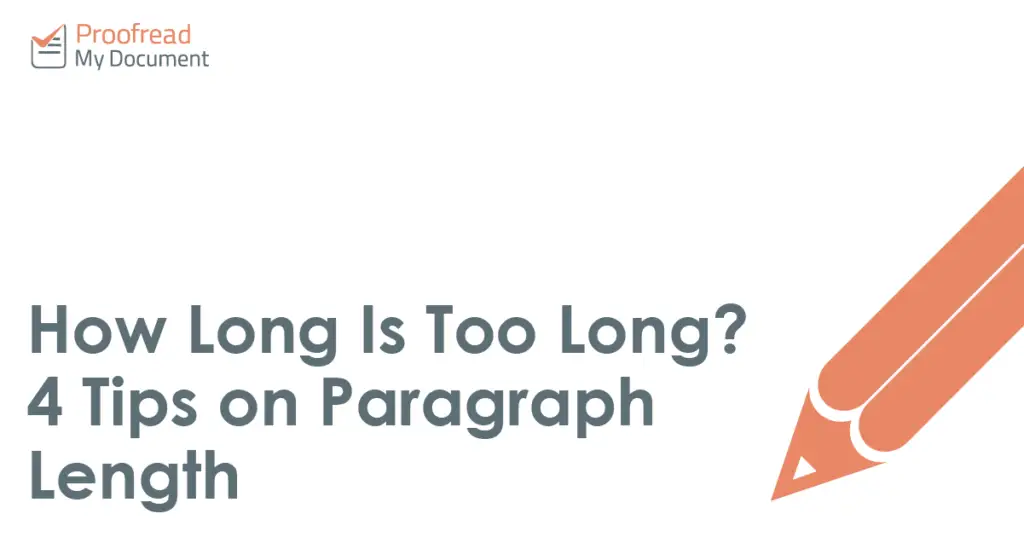The blocks of text you can see on this page are paragraphs. Some are short; some are longer. That’s just how paragraphs work. But how do you know if a paragraph is too long or too short?

Well, it all depends on the situation. But if you follow our four tips on paragraph length, your writing will be easy to read and your paragraphs will look just right on the page.
1. What Do Paragraphs Do? And Why Does Paragraph Length Matter?
Ideally, each paragraph in your writing should cover one main idea. It should begin with a topic sentence to set out what the paragraph is about. You can then use the rest of the paragraph to expand upon this. You can actually see this structure in this paragraph: the first sentence introduces the main idea, then the next three sentences provide further information.
Paragraph length, meanwhile, is important because very long paragraphs can be hard to read, while too many short paragraphs will make writing seem disjointed. As a decent rule of thumb, most paragraphs should be between 100 and 200 words long. However, this depends on the situation…
2. Matching Paragraphs to the Document Type
While the rule above about paragraph length can be a helpful guideline, you also need to consider the document type and what you’re trying to achieve. In this post, for example, we’re using shorter paragraphs (between 30 and 70 words long) because they’re easier to read on screen.
Longer paragraphs, on the other hand, allow you to go into more depth on a topic, so they are useful when you need to go into extra detail or provide examples (e.g. in essays or technical writing).
Find this useful?
Subscribe to our newsletter and get writing tips from our editors straight to your inbox.
3. Variety Is the Spice of Life
Using only long or only short paragraphs will make any document hard to read. As such, try to mix things up a little on the paragraph length front.
An easy way to do this is to break each main part of your document down into sections, with each section covering a different main topic. You can then introduce each section with a short paragraph setting out the overall topic, following this up with longer paragraphs going into more detail.
4. The Editing Process
Editing is important if your document contains a lot of long paragraphs, as this can be very difficult to read. Your best option here is to break some of the long paragraphs down into shorter ones.
You can do this by looking for points where the subject shifts slightly, even if it only moves from introducing a topic to discussing it in depth. If required, you can also add linking sentences to show how the shorter paragraphs are related to one another.
If your work contains too many short paragraphs, look for the ones with similar subject matter and consider whether any can be combined. It could be as easy as deleting a line break!



